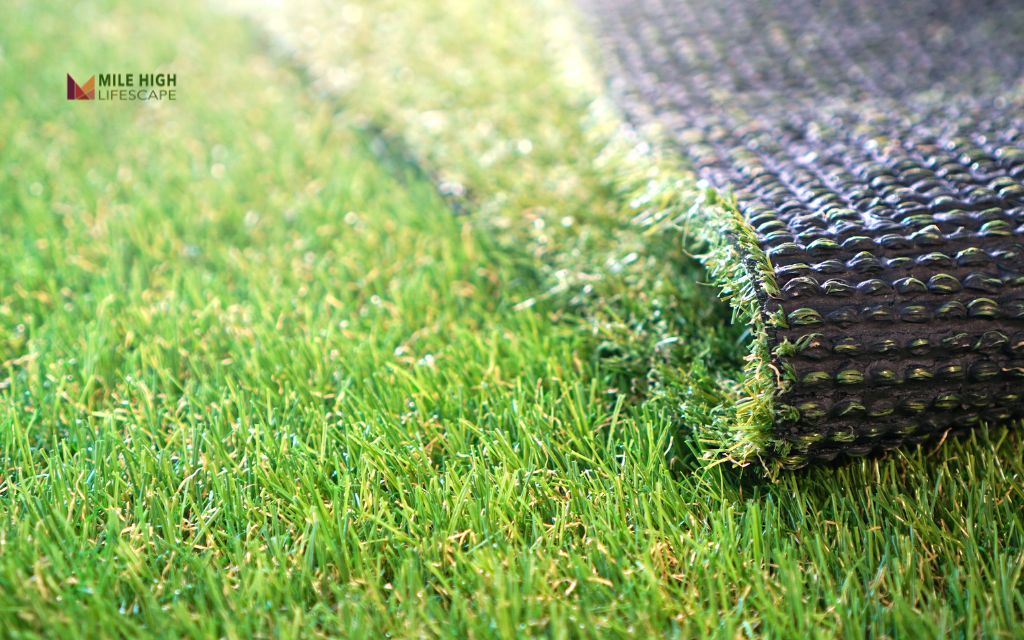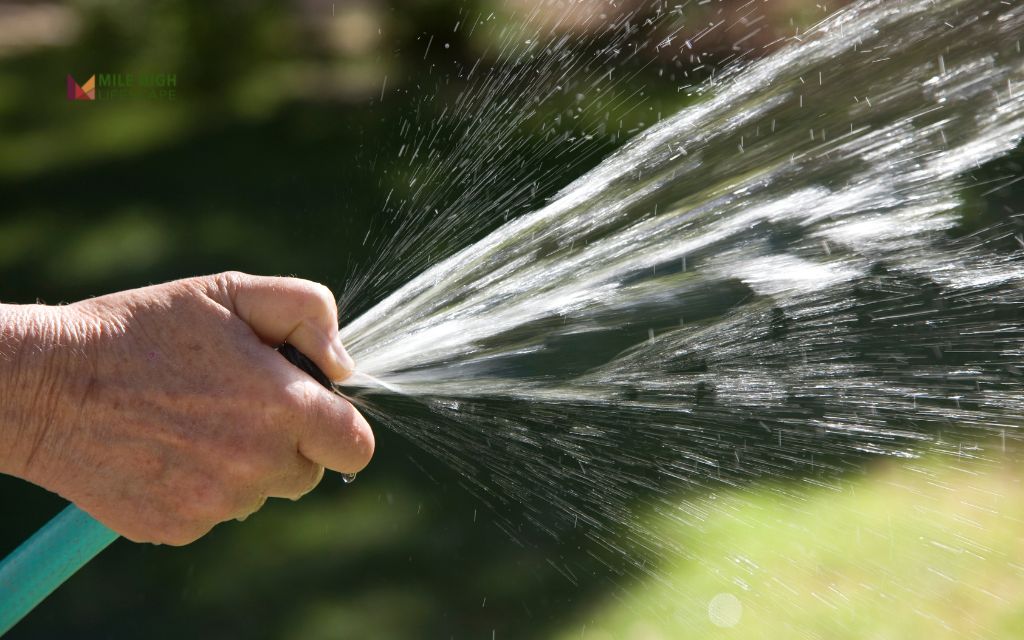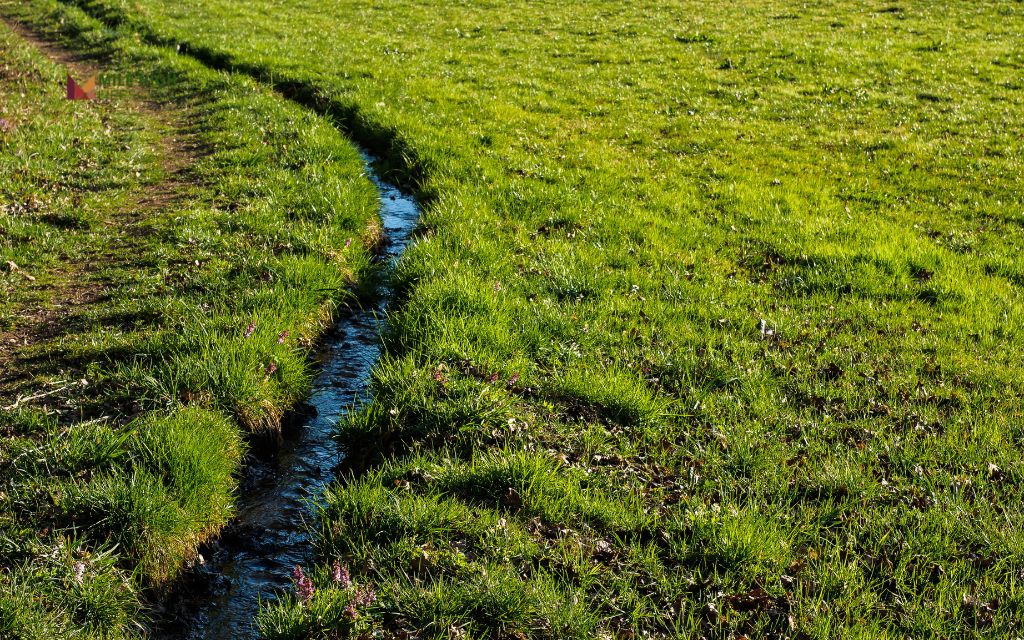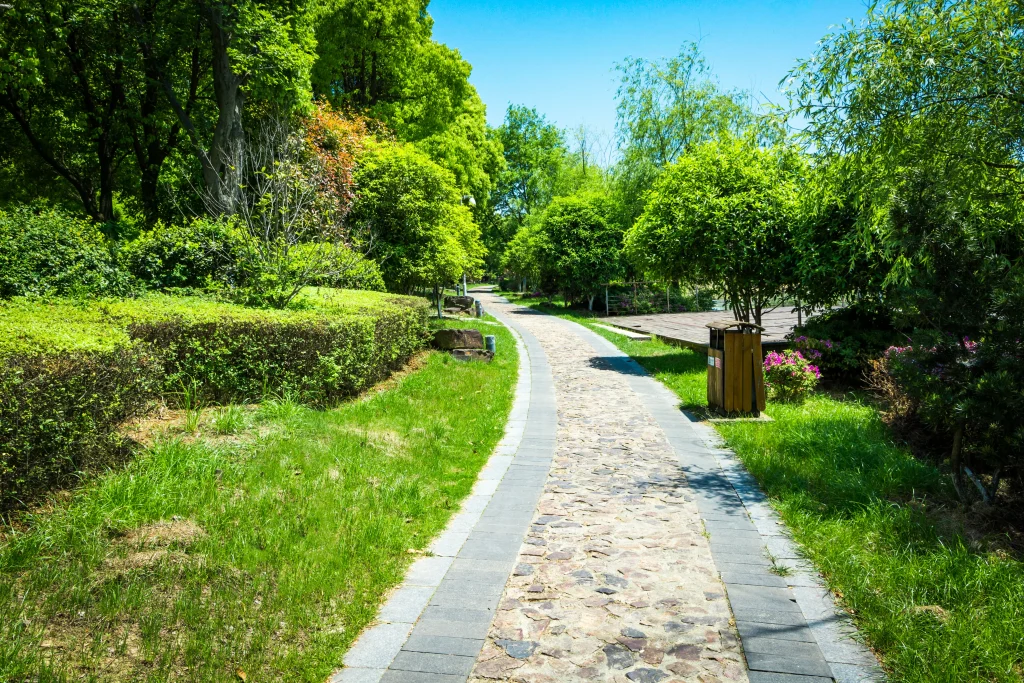Artificial grass maintenance protects your investment while ensuring optimal performance throughout its lifespan. Proper synthetic turf care requires specific techniques that differ significantly from natural lawn maintenance, focusing on cleaning protocols, drainage management, and fiber preservation.
Effective artificial grass maintenance combines routine upkeep with targeted interventions that address common issues before they become costly problems. Understanding these maintenance fundamentals helps homeowners maximize their synthetic lawn’s durability and appearance.
This comprehensive guide provides expert-tested strategies for maintaining artificial grass systems in Denver’s unique climate conditions.

10 essential artificial grass maintenance practices
Understanding how do you maintain artificial grass begins with establishing consistent care routines that address both immediate concerns and long-term preservation needs.
1. Implement regular fiber grooming
Synthetic fibers naturally flatten under regular use, creating compressed areas that reduce aesthetic appeal and surface comfort. Weekly brushing with stiff-bristled tools restores fiber position and prevents permanent matting damage.
Focus grooming efforts on high-traffic zones where compression occurs most frequently. Brush against the grain direction to lift compressed fibers, then follow with light strokes in the natural fiber direction to create uniform appearance.
Proper grooming redistributes infill materials evenly across the surface, maintaining structural support that keeps synthetic grass performing optimally.
2. Remove organic debris systematically
Organic matter accumulation creates moisture retention issues that foster bacterial growth and generate persistent odors. Fallen leaves, twigs, and plant materials decompose against turf surfaces, producing acidic compounds that degrade synthetic fibers over time.
Weekly debris removal prevents moisture-related problems while maintaining visual appeal. Use leaf blowers or manual collection methods depending on debris volume and area size.
Pay attention to corners, edges, and areas beneath outdoor furniture where organic matter tends to accumulate unnoticed.
3. Establish effective rinsing protocols
Regular water applications remove accumulated contaminants including dust, pollen, and airborne particles that dull synthetic grass appearance. Consistent rinsing prevents substance buildup that attracts insects or creates unpleasant conditions.
Monthly comprehensive rinsing maintains fiber appearance while supporting drainage system function. Use garden hoses with adjustable spray settings to control water pressure and coverage patterns.
This practice significantly extends artificial grass lifespan by preventing contaminant accumulation that can cause permanent staining or fiber damage.

4. Address pet waste immediately
Pet waste management represents the most critical aspect of artificial grass maintenance for pet owners. Urine and feces contain bacteria and ammonia compounds that penetrate turf systems, creating persistent contamination if not addressed promptly.
Remove solid waste using appropriate collection tools, then thoroughly rinse affected areas with water to dilute liquid waste components. Follow initial cleaning with enzyme-based cleaners specifically formulated for synthetic turf applications.
Quick intervention prevents organic compounds from setting into infill materials where they become difficult to eliminate completely.
5. Apply targeted deodorizing solutions
Specialized deodorizing products provide biological odor control that standard cleaning methods cannot achieve. These solutions contain enzyme cultures that break down organic compounds causing persistent smells rather than masking odors temporarily.
Select non-toxic, eco-friendly deodorizers that protect family members and pets while preserving synthetic grass integrity. Avoid harsh chemicals that might damage fibers or contaminate surrounding soil areas.
Apply deodorizers according to manufacturer specifications, focusing on areas with heavy pet use or persistent odor concerns.
6. Handle stains through immediate action
Stain prevention requires prompt response and appropriate cleaning techniques tailored to contaminant types. Food spills, beverage accidents, and oil-based substances create lasting discoloration when allowed to set into synthetic fibers.
Begin stain removal using mild detergent solutions and warm water, working from stain edges toward centers to prevent spreading. Rinse thoroughly after cleaning to remove detergent residues that attract additional soil particles.
Different stain types require specific treatment approaches, so identify contaminant sources before selecting cleaning methods.
7. Monitor drainage performance
Drainage system functionality directly impacts artificial grass longevity and performance. Standing water after rainfall or persistent moisture in specific areas indicates drainage problems requiring attention.
Inspect synthetic turf regularly after heavy precipitation, noting areas where water pools or drains slowly. Pay particular attention to low spots, zones near hardscaping features, and areas with heavy foot traffic compaction.
Address minor drainage issues through infill addition or compaction relief. Serious drainage problems may require professional intervention including base system modifications.

8. Maintain seam integrity
Seam connections represent potential failure points that require regular inspection and prompt repair. Damaged seams allow moisture penetration while creating safety hazards for users.
Examine seam areas monthly for separation, lifting edges, or adhesive failure signs. Focus on high-traffic zones and areas exposed to temperature extremes that stress seam connections most severely.
Minor seam repairs often require specialized adhesives or seam tape applications. Significant damage demands professional repair services to maintain warranty coverage and optimal performance standards.
9. Protect against chemical damage
Harsh cleaning chemicals can cause irreversible damage to synthetic grass systems. Bleach, ammonia-based products, petroleum solvents, and acidic cleaners damage fibers through discoloration, brittleness, or complete breakdown.
Use mild dish soap, specialized turf cleaners, and enzyme-based products that provide effective cleaning without risking material damage. Always dilute cleaning solutions according to manufacturer instructions and test products in inconspicuous areas first.
Chemical protection preserves both aesthetic appeal and structural integrity throughout the artificial grass lifespan.
10. Manage infill material levels
Infill materials provide structural support, weight distribution, and performance characteristics essential for artificial grass functionality. Regular infill level monitoring ensures optimal turf performance and extends overall system durability.
Check infill distribution monthly, identifying areas where materials have displaced or compacted excessively. High-traffic zones typically require more frequent infill additions than low-use areas.
Maintain manufacturer-recommended infill depths to preserve warranty coverage and ensure continued performance standards.
Why artificial grass maintenance matters
Understanding maintenance importance helps homeowners make informed decisions about care investments and professional service requirements.
Investment protection
Artificial grass installations represent significant financial investments requiring protection through proper maintenance protocols. Quality synthetic turf systems cost thousands of dollars, making maintenance routines essential for maximizing return on investment.
Proper care extends artificial grass lifespan from typical 10-15 year ranges to 20 years or more, significantly improving investment value. Well-maintained systems continue providing functional benefits including consistent appearance, reliable drainage, and comfortable surface textures.
Regular maintenance preserves warranty coverage while preventing costly repair needs that result from neglect or improper care techniques.
Health and safety considerations
Artificial grass maintenance directly impacts family health and safety through contamination prevention and hazard identification. Regular cleaning prevents organic matter accumulation that creates ideal conditions for harmful bacteria and mold growth.
Proper maintenance removes allergens including pollen and dust particles that accumulate on synthetic surfaces, creating more comfortable environments for family members with respiratory sensitivities.
Routine inspections identify potential safety hazards including loose seams, damaged areas, or foreign objects that might cause injuries during normal use.
Professional service considerations
Recognizing when maintenance challenges exceed DIY capabilities protects artificial grass investments while ensuring optimal performance standards.
Complex problem resolution
Professional services become necessary when maintenance issues involve complex staining, persistent odor problems, or significant wear patterns that resist standard treatment methods. Professionals possess specialized equipment and products unavailable to homeowners.
Drainage system problems often indicate base layer issues requiring excavation and regrading that exceeds typical homeowner capabilities. Professional intervention ensures proper repair techniques that restore optimal drainage function.
Weather-related damage or significant wear patterns may require professional repair methods and replacement materials to restore appearance and functionality standards.
Long-term performance optimization
Professional maintenance services provide periodic deep cleaning, infill replacement, and system evaluations that extend artificial grass lifespan beyond typical expectations. These services complement homeowner maintenance efforts through specialized techniques and commercial-grade equipment.
Regular professional inspections identify developing problems before they become expensive repair needs, protecting homeowner investments through preventive intervention strategies.
Professional services ensure maintenance activities comply with warranty requirements while maintaining optimal performance standards throughout the artificial grass lifespan.
For nearly two decades, Mile High Lifescape has been proudly serving the Denver Metro area as the go-to landscape company. With a reputation for excellence, we offer a comprehensive range of friendly and professional landscaping and lawn care services. Count on us to transform your outdoor space into a beautiful oasis that exceeds your expectations.
Frequently asked questions (FAQs)
How often should artificial grass maintenance occur?
Weekly basic maintenance including debris removal and light rinsing provides optimal care. Monthly deep cleaning addresses accumulated contaminants while seasonal maintenance handles specific climate-related concerns.
What cleaning products work best for artificial grass?
Mild dish soap, enzyme-based cleaners, and specialized turf cleaning products provide effective cleaning without damaging synthetic fibers. Avoid harsh chemicals including bleach, ammonia, and petroleum-based solvents.
Can pressure washers be used safely on artificial grass?
Pressure washers work safely on artificial grass when used with low pressure settings and appropriate distance from surfaces. High pressure can damage fibers, so test in inconspicuous areas first.
How long does properly maintained artificial grass last?
Quality artificial grass with consistent maintenance typically lasts 15-20 years or more, depending on usage levels, climate conditions, and maintenance consistency. Proper care significantly extends lifespan beyond manufacturer warranties.
What indicates professional maintenance services are needed?
Complex staining, persistent odors, drainage problems, significant wear patterns, or seam damage often require professional intervention with specialized equipment and expertise beyond typical homeowner capabilities.
